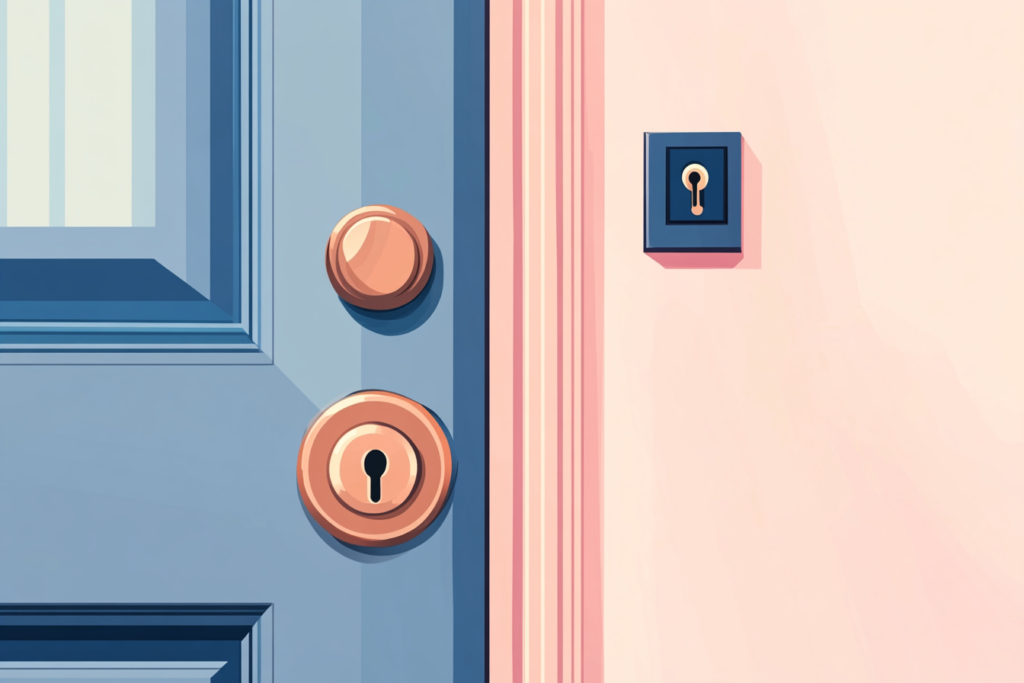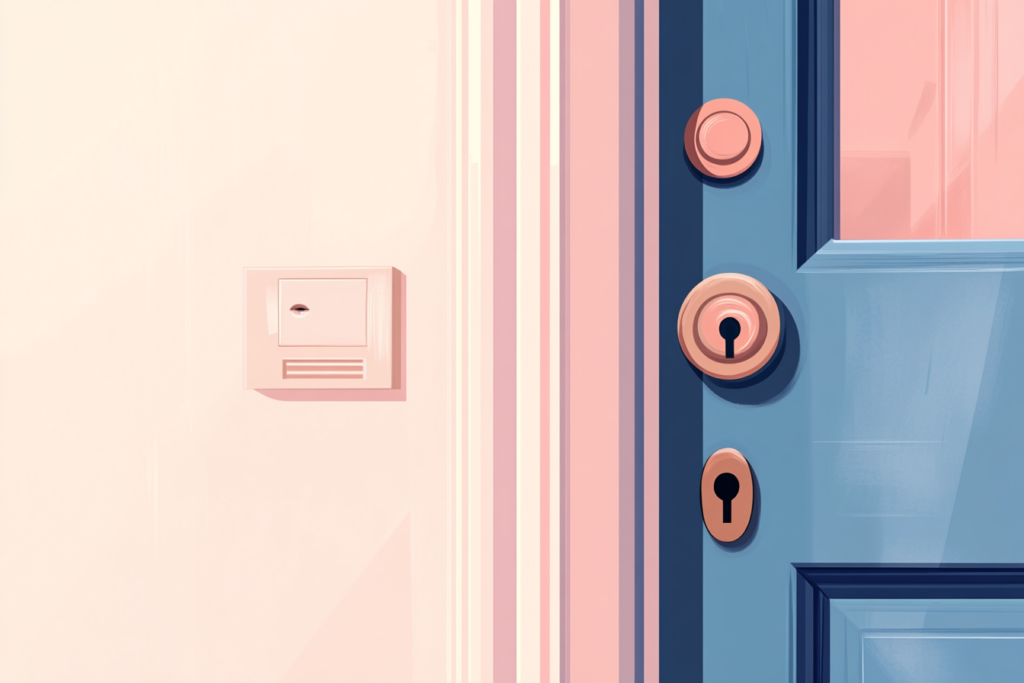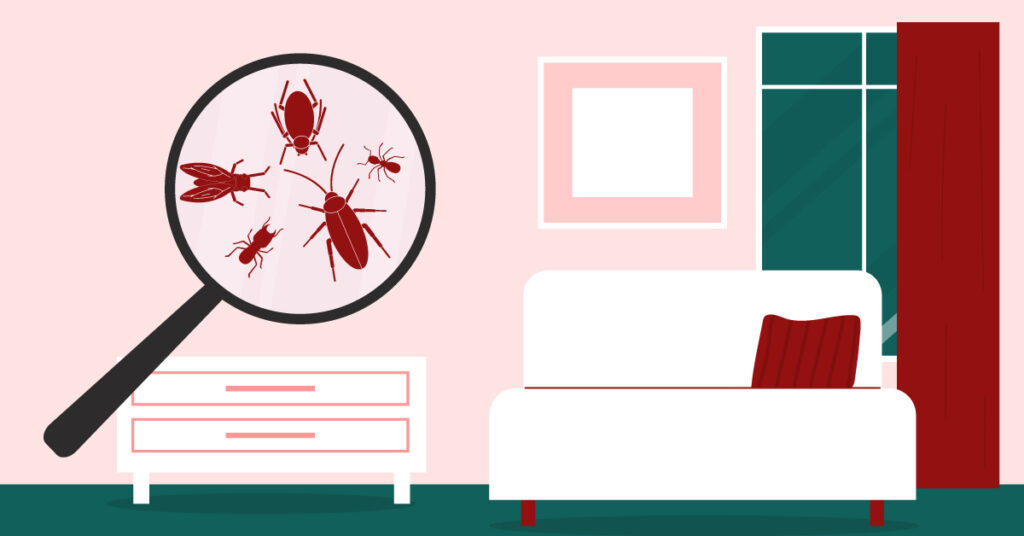Your home is only as secure as its weakest entry point. That means every external door needs a high-security, robust locking system that can deter unauthorized entry. From deadbolts and cylinder locks to smart and keypad entry, there are many options, but for true security, every type of lock also needs the right support structure. Let’s take a look at what to shop for in a lock and how to support it with the right doorframe, strike plate and barricade options.
Top Locks for External Doors

Most external doors have two locks for security—a top lock and a lock on the doorknob. The door knob lock is not designed to be particularly secure. It stops casual attempts at entry. The top lock is the security lock. There are several options available to provide extra levels of security.
Deadbolt Locks
Deadbolts are one of the most common types of secure locks used for external doors. Unlike spring bolt locks, which rely on a spring to hold the bolt in place, deadbolts are operated manually, making them more resistant to forced entry.
These locks come in single-cylinder and double-cylinder, each with their safety considerations. With a single cylinder, you operate the lock with a key from the outside but a simple thumb turn on the inside. This makes the lock safer to use if you have a home emergency like a house fire, but it’s also easier to bypass, particularly if a window or glass panel is within reach of the lock. Double-cylinder models use a key for both sides of the lock, which is better security against intrusion but makes it more difficult to exit during an emergency.
Smart Locks
Smart locks integrate advanced technology, allowing homeowners to lock and unlock doors at their fingertips using smartphones, voice commands, or biometric data. Features often include remote access, real-time monitoring, and the ability to create temporary or one-time-use access codes for guests.
High-Security Cylinder Locks
These locks are designed to resist common break-in techniques such as picking, drilling, and bumping. They often feature complex keyways and hardened materials to enhance security. Brands like Medeco and Mul-T-Lock are renowned for their high-security cylinders.
Mortise Locks
Mortise locks are installed within a pocket cut into the door edge, making them sturdier and more resistant to tampering. They combine a latch and a deadbolt in one mechanism. While high security, these are also high priced, so they may not be suitable for all residential applications.
Essential Security Features and Their Benefits
A high-security lock installed properly is still only as good as its weakest point. With a burglary occurring every 36 seconds in the United States, you’ll want to make sure all of your exterior locks and doors have the right features and security upgrades to resist the most common forms of unauthorized entry. Assess each lock for:
- Material Quality: Locks made from hardened steel or brass are stronger than softer alternatives.
- Lock Grade: The American National Standards Institute (ANSI) assigns grades to locks based on their durability and security. Grade 1 locks offer the highest level of residential security, followed by Grades 2 and 3.
- Bolt Size: The longer the bolt extends into the doorframe, the more challenging it is for intruders to force the door open.
- Drill Resistance: Hardened steel inserts can prevent drilling attacks that go right for the locking mechanism. While unusual for home break-ins, drill attacks can happen when you have a concealed entry point.
- Pick Resistance: Complex pin configurations and security pins make it more difficult for intruders to pick the lock.
- Key Control: Some high-security locks offer patented keyways, preventing unauthorized duplication of keys and ensuring that only authorized individuals can copy them.
Upgrading the Doorframe for Enhanced Security
A sturdy lock is only as effective as the doorframe it secures. Reinforcing the doorframe and hardware is crucial to prevent someone from simply kicking the door in.
- Reinforced Strike Plates: Switch to longer screws and a reinforced strike plate to give your door lock a lot more resistance to direct force.
- Door Jamb Reinforcement: Your lock may be metal, but if your doorframe is wood, you run the risk of splintering during an entry attempt. Installing a door jamb shield, such as the Door Armor Jamb Shield, strengthens the doorframe by distributing the force exerted during a break-in attempt across a larger area.
- Door Barricades and Security Bars: Additional barriers, such as door jammers or security bars, provide an extra layer of protection by physically preventing the door from being forced open, even if the lock is compromised.
Conclusion
Investing in high-quality locks and reinforcing your doorframe are essential steps in enhancing your home’s security. By selecting locks with robust security features and fortifying the structural components of your doors, you create a formidable barrier against potential intruders. Regular maintenance and periodic assessments of your door security measures ensure they remain effective over time, providing peace of mind and safeguarding your property.
You might also be interested in: Securing Windows and Doors Against Break-Ins – Safeguard Your Castle




